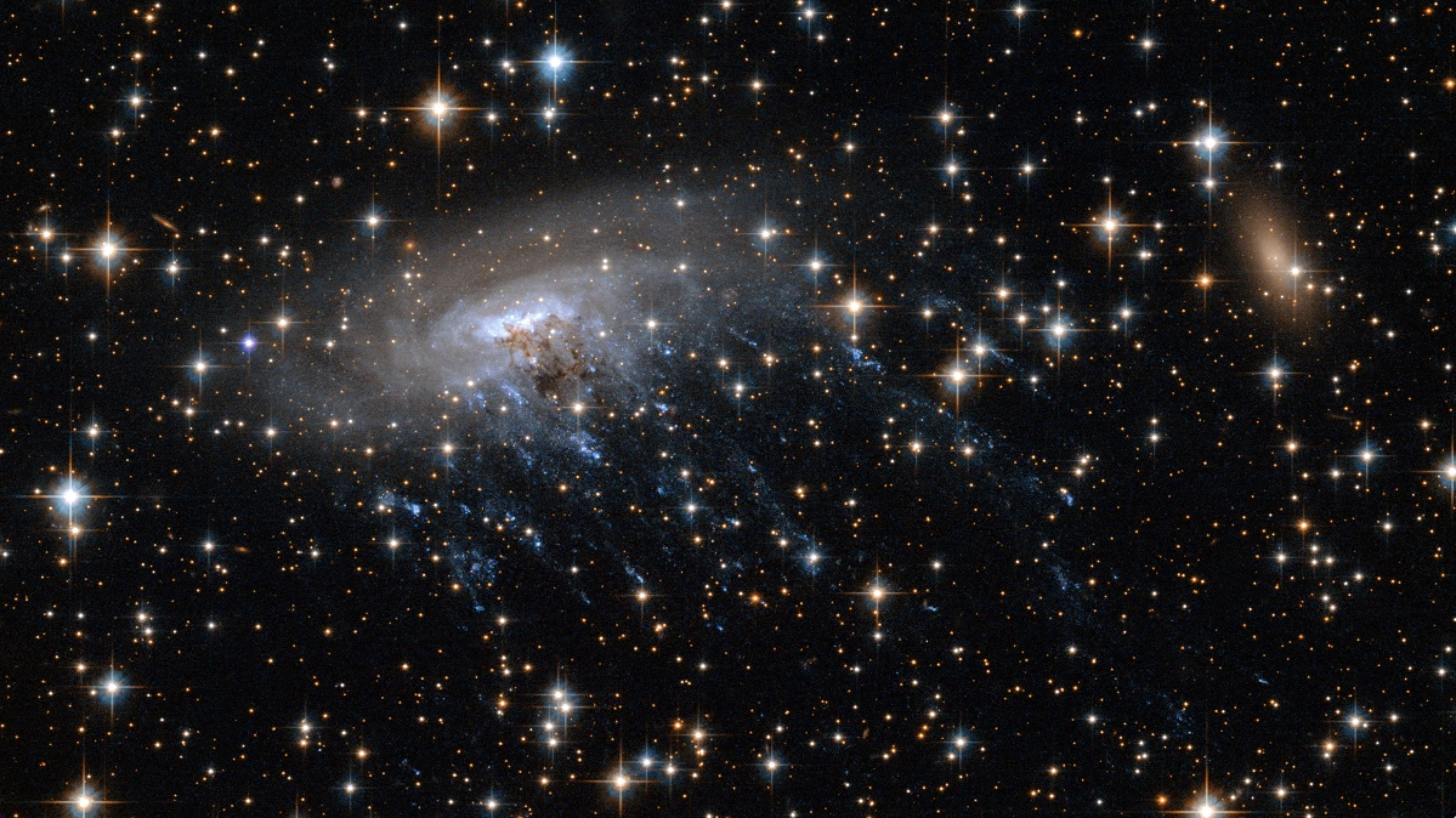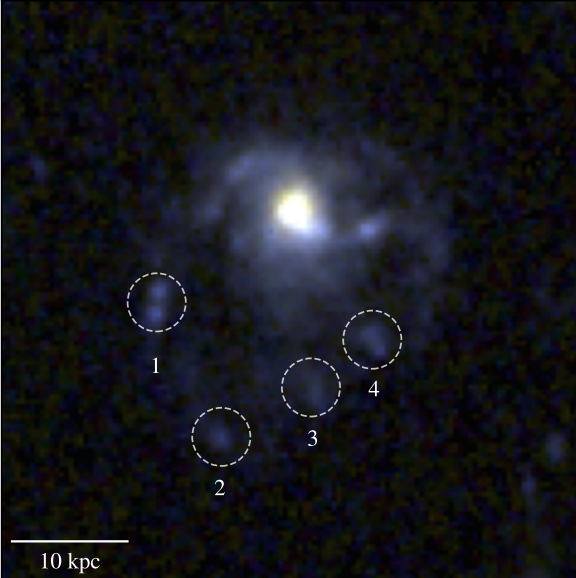James Webb telescope discovers tentacled 'jellyfish' galaxy swimming through deep space
A possible new "jellyfish" galaxy discovered by the James Webb Space Telescope could deepen our understanding of galaxy evolution and star formation.

Astronomers have discovered what seems to be a new "jellyfish" galaxy about 12 billion light-years away from Earth using high-resolution imaging from the James Webb Space Telescope (JWST).
The galaxy appears to have tentacle-like trails of gas and stars jutting off from one side, likely making it a jellyfish galaxy — a class of galaxies that drip tendrils of star-forming material as they swim through space. Though more analysis is needed to confirm whether the newfound galaxy truly falls into this category, all signs so far indicate that it does.
Ian Roberts, an astronomer at Waterloo University, found the unique galaxy while sifting through images taken by JWST. His team's research is available to read on the preprint server arXiv, but has not yet been peer reviewed.
"The fact that an interesting galaxy such as this one could be found in such a cursory way suggested that there would be real value in doing a truly systematic search for these sorts of objects," Roberts told Live Science in an email.
Jellyfish galaxies
Jellyfish galaxies develop their tentacles as they undergo a phenomenon called ram pressure stripping, which happens when a galaxy moves through the dense medium between other closeby galaxies within a galaxy cluster. This movement eventually pushes some gas and stars out of the roaming galaxy, leaving them to trail behind. These tentacles sometimes trigger a large number of stars to form.
Though astronomers don't believe this kind of pressure stripping to be rare in nearby space, the jellyfish stage is short on the cosmic timescale, so it's unusual to capture these aquatic forms before they disappear, Roberts said.
Get the world’s most fascinating discoveries delivered straight to your inbox.
Farther out in the universe, though, where JWST observed this new jellyfish galaxy, "we really have no idea" how common they are, Roberts said.

Jellyfish galaxies provide a way to study galaxy evolution and star formation. Some galaxies in dense environments form many fewer new stars than others, and understanding the reasons why is fundamental to our understanding of how galaxies change over time.
Stars are also affected by ram pressure stripping. Though a surge of new stars may form in the trail behind a jellyfish galaxy, the loss of gas in the center of the galaxy could prevent formation there, according to Roberts.
While ram pressure stripping is the best explanation for the new observations, there may be other possible reasons that the galaxy looks the way it does, and they can't yet be ruled out. The jelly's appendages could be an illusion; parts of the image that show the tentacles were taken using a method that creates blurring, introducing some uncertainty, Roberts said.
Next steps
With the limited existing data about jellyfish galaxies, it's not clear to astronomers whether a jellyfish galaxy so far out in space is rare or not. "We don't know the answer yet, but the more galaxies like this that are discovered the more clues that we get," Roberts said.
The research team is hoping to sharpen their image by gathering data from other telescopes, which would allow them to determine whether or not what they've observed is indeed a jellyfish galaxy.
James Webb Space Telescope quiz: How well do you know the world's most powerful telescope?

Perri Thaler is an intern at Live Science. Her beats include space, tech and the physical sciences, but she also enjoys digging into other topics, like renewable energy and climate change. Perri studied astronomy and economics at Cornell University before working in policy and tech at NASA, and then researching paleomagnetism at Harvard University. She's now working toward a master's degree in journalism at New York University and her work has appeared on ScienceLine, Space.com and Eos.
You must confirm your public display name before commenting
Please logout and then login again, you will then be prompted to enter your display name.


